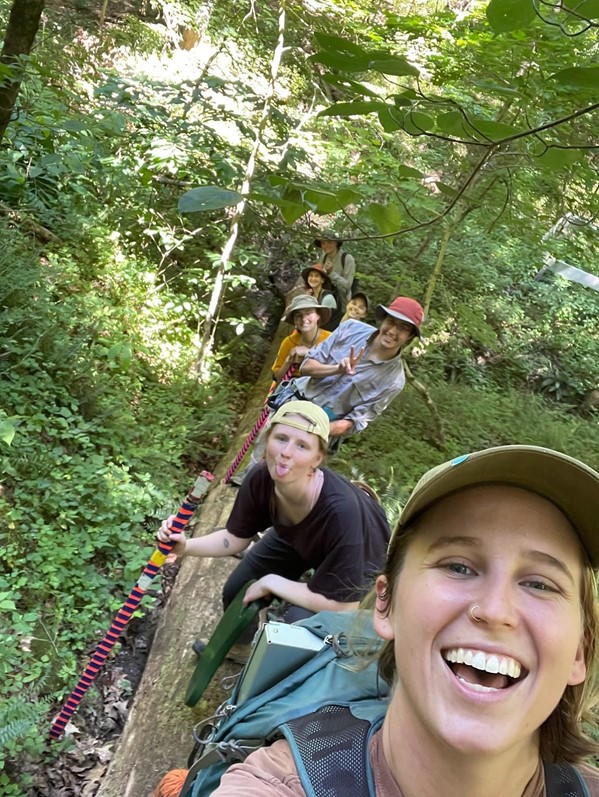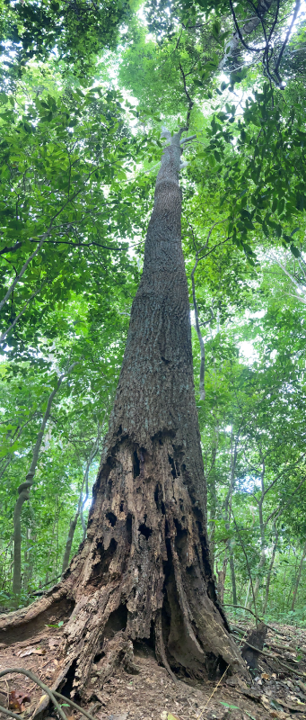ForestGEO Hosts Multi-Network Tree Mortality Workshop
The Alliance for Tropical Forest Science (ATFS) convened a workshop July 15-20 in Cartagena, Colombia. During that time, 22 representatives from ten tropical forest networks discussed the pantropical patterns of forest mortality, providing hands-on experience for early-career researchers to participate in international science collaborations that address broad scientific questions.
ATFS is a collaboration of 11 forest science networks across the tropics (ForestGEO, 2ndFor, AfriTRON, ATDN, DryFlor, GEM, RAINFOR, RBA, SEOSAW, TmFO, and TreeCo) made possible through an AccelNet grant from the United States National Science Foundation. ATFS is dedicated to accelerating the research and capacity-building needed to improve understanding of how tropical forests function and to predict how they will respond to and drive future changes in the Earth System.
José Medina-Vega and Daniel Zuleta are ForestGEO postdocs who participated in the ATFS workshop. Below, they share about tropical tree mortality and their time in Cartagena.

What forest mortality patterns are consistent across the tropics?
Generally, forests with higher availability of resources (i.e. light, water, and nutrients) tend to be more productive and have higher tree mortality rates than forests with lower availability of resources. It is common in tropical forests for intermediate size trees to die less than both small and large trees and for trees with lower wood density–regardless of tree size–to have a high risk of mortality. These general patterns appear to be consistent across regions. Still, they may differ in intensity in response to biogeographic and/or edaphic factors or be altered due to stochastic events. For example, variations in rooting depth and variations in the capacity of soils to retain (and supply) water may be related to variations in drought-associated mortality. Additionally, random events such as stochastic lightning and/or winds may alter tree mortality rates.


What was a highlight of the workshop?
The workshop provided an excellent opportunity to share ideas among experts in the field. Participants highlighted several important points in the workshop, particularly, the need to tackle pantropical-level knowledge gaps by combining large-scale research efforts. Collaboration among networks is critical because individual networks alone do not have enough information to infer large-scale patterns. Many other ideas emerged from the multi-network interactions including protocol and data alignment, statistical biases, and proposals for improving communication between field-based ecologists and modelers.
During the workshop, participants also had the opportunity to receive feedback on their current analysis. We allocated the mornings to mentoring specific Master, PhD, and postdoc projects related to forest dynamics.
What plans are there to continue momentum for the collaboration that began at the workshop?
The Cartagena workshop was the first step to establish ongoing collaboration between networks that study tropical forests. Going forward, each network representative will extend the discussion carried out in Cartagena within their respective network, sharing the defined objectives and working plans. Working plans were divided into core groups (e.g., communication and code development, among others), and group leaders will subsequently be identified for each of those core groups. Virtual and physical (when possible) meetings will be maintained among networks at every step, where every network representative will participate actively (i.e., learn, code, and write) to develop products/outputs.


